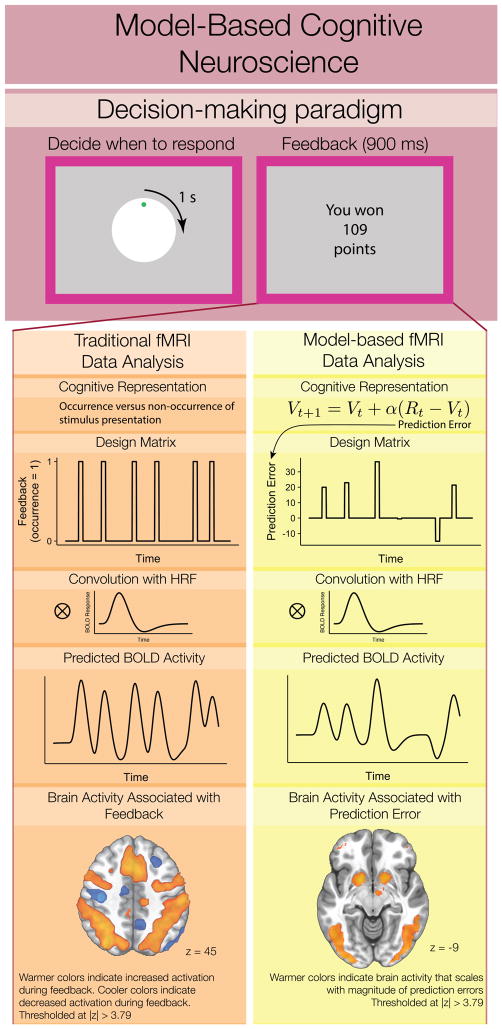Box 2 Figure.
In traditional and model-based fMRI analyses, participants complete an experimental task designed to elicit a cognitive process and/or behavior of interest. In this example, on each trial, a dot revolves around a circle over the course of four seconds [103]. Responding at any point during the revolution terminates the trial and leads to a unique probabilistic reward displayed during a feedback phase lasting 900ms. Thus, participants must learn when to respond in order to obtain larger rewards.
In general linear model (GLM) analyses of fMRI data, the design matrix encodes the onset, duration, and magnitude of stimuli presented during the experiment. To estimate the predicted blood-oxygen-level-dependent (BOLD) response (i.e., the conventional index of neural activity in fMRI), each regressor in the design matrix is convolved with a canonical hemodynamic response function (convolution with HRF).
In traditional analyses (left column), feedback events are binary (design matrix) and reflect whether participants were viewing the feedback stimulus at that time. The major difference in model-based fMRI analyses is that the design matrix represents a cognitive process estimated according to a formal model of behavior (cognitive representation). Here, we illustrate the magnitude of prediction errors in six trials from a single subject, fit according to a delta rule learning model (see Box 3). Thus, the brain activity associated with the model-based signal describes the response of functional regions to the magnitude of prediction errors, whereas regions associated with the feedback signal reflect overall activity without a specific hypothesis of what cognitive operations are involved in processing feedback.

